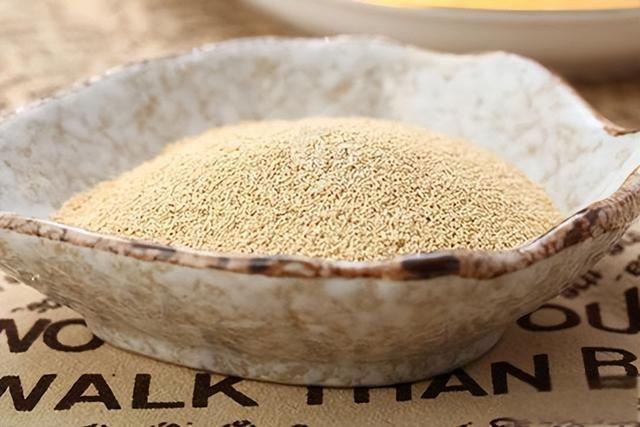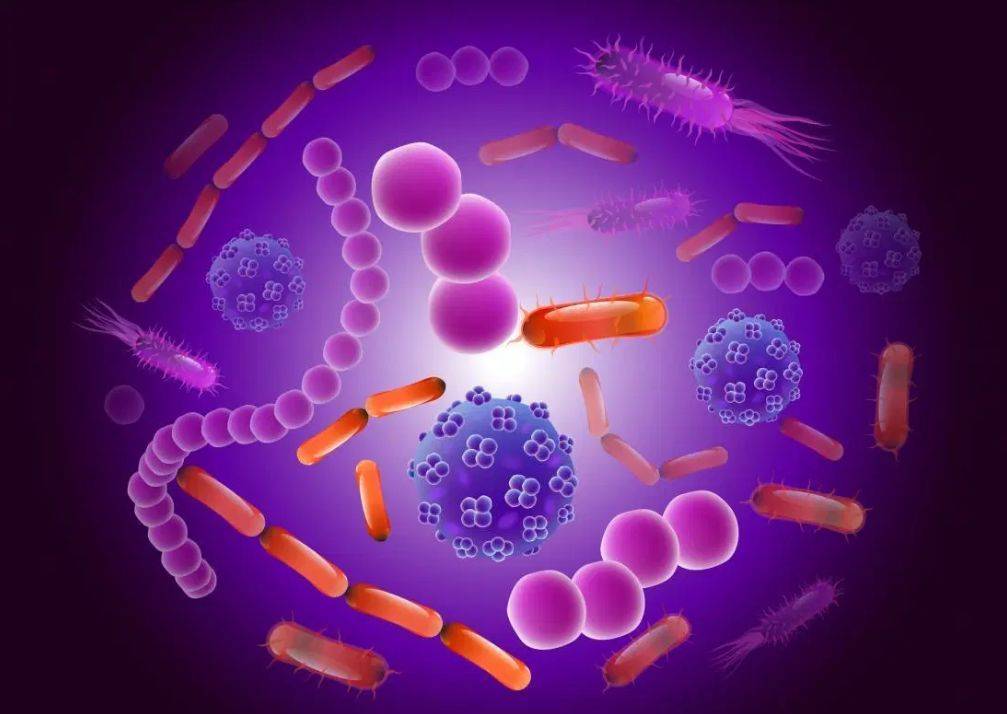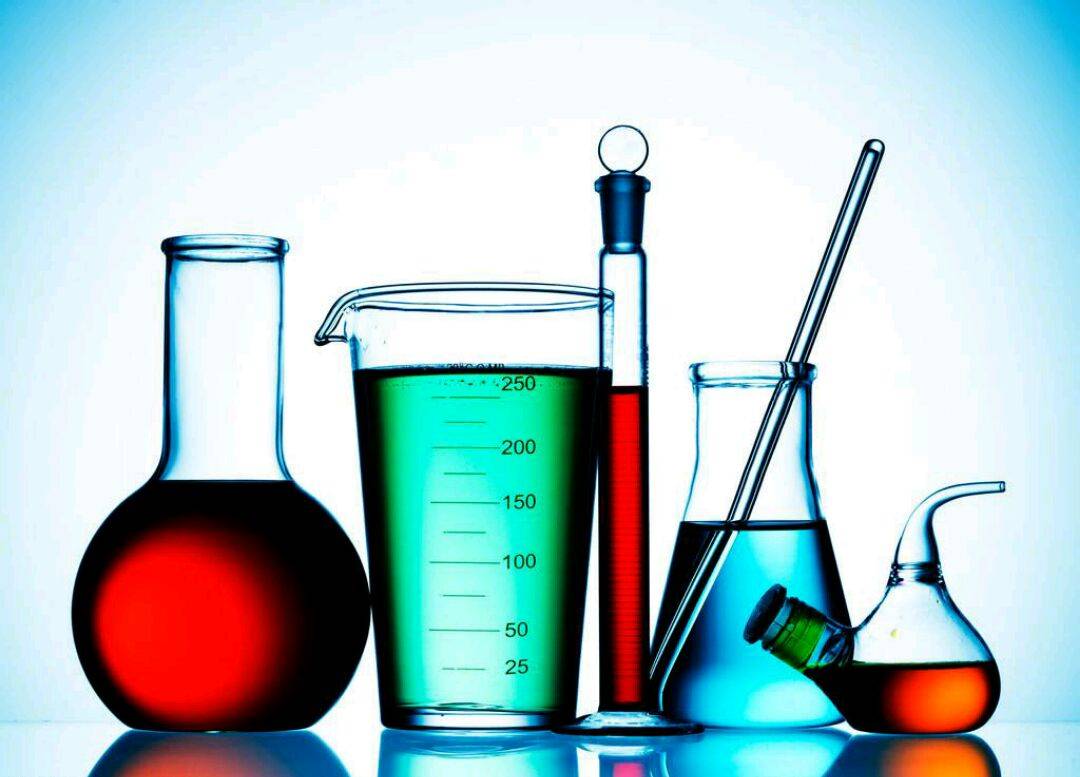What Are the Benefits of Yeast Beta Glucan Powder?
Beta-glucan is the main component of the yeast cell wall polysaccharide, which is located in the innermost layer of the cell wall. It is a structural polysaccharide whose main physiological function is to maintain the mechanical strength of the cell wall and enable the cell to maintain its normal physiological shape. In the 1940s, Dr. Louis Pillemer of the Massachusetts Institute of Technology discovered a substance in the yeast cell wall that could boost immunity [1]. In 1961, Drs. Diluzio and Riggi of the University of Turon determined that the active ingredient in yeast glucan . In 1961, Dr. Diluzio and Dr. Riggi of the University of Turin determined that the active ingredient in yeast polysaccharides was β-glucan [2].
Yeast β-glucan is composed of glucose, with a chemical structure dominated by β-1,3-D-glucan as the main chain and β-1,6-D-glucan as the branch chain (as shown in Figure 1), and a molecular weight of 20–4000 kDa [3–4]. It accounts for 30%–35% of the dry weight of the yeast cell wall. In 2010, China included yeast β-glucan in the list of new food ingredients, with an edible amount not exceeding 250 mg/day, and in 2012 it was added as a nutritional supplement to formula milk for older infants [5]. In addition, yeast β-glucan has passed safety reviews in the United States, the European Union and other places. For example, yeast beta-glucan was approved as “Generally Recognized as Safe” (GRN No. 239) by the US Food and Drug Administration (FDA) in 2009, and can be used in a variety of foods such as baked goods, beverages, and dairy products, with an addition of no more than 200 mg per serving. The European Union approved yeast beta-glucan for sale as a novel food ingredient in 2011 (2011 /762/EU).
Currently, yeast β-glucan is widely available. Commercially, it is usually prepared from brewer's yeast (bread yeast) through extraction, acid-base treatment, spray drying and other steps. In addition to Saccharomyces cerevisiae, Kluyveromyces marxianus and Kluyveromyces lactis were approved for use in food in 2013 and 2024, respectively. Kluyveromyces marxianus has a fast growth rate and contains antioxidant components, making it a potential raw material for β-glucan extraction [6].
Vaithanomsat et al. [7] investigated the potential of β-glucan derived from Kluyveromyces marxianus as a polymeric material, and found that it could be used as a potential polymeric material like commercial yeast β-glucan. Chen et al. [8] found that β-glucan derived from Kluyveromyces marxianus had strong antioxidant activity against the diphenylpicrylhydrazyl radical (DPPH ·), hydroxyl radical ( ·OH) and superoxide anion radical (O2 ·) have a strong scavenging effect, thus exhibiting antioxidant activity.
Beta-glucan has a variety of health benefits, such as immunomodulation, improving intestinal health, regulating glycolipid metabolism, and antioxidant activity. As the “Healthy China 2030” policy enters the stage of full implementation, yeast beta-glucan has gradually come into the public eye due to its significant immunomodulatory and prebiotic effects. Yeast β-glucan can be recognized by pattern recognition receptors on the surface of immune cells, which can activate immune effects in the body; regulate intestinal flora, promote intestinal immunity, can be utilized and metabolized by specific intestinal flora, and positively affect body health by regulating intestinal flora and their metabolites [9].
1 Functional activity of yeast β-glucan
1.1 Immune function
1.1.1 Regulates immune function and promotes intestinal immunity
Yeast β-glucan is a natural immunomodulator. Its immunomodulatory mechanism includes specific binding to immune cells and stimulating immune cells to exert immunological activity on the body [10-11]. After yeast β-glucan reaches the intestine, it binds to pattern recognition receptors (PRRs) expressed by macrophages on the microvilli of Peyer's patches and is internalized [12-13]. Then, after being recognized by the receptor, a signal is transmitted to human peripheral blood mononuclear cells (PBMCs), among which Dectin-1 and complement receptor 3 (CR3) are the two main receptors for immune cells to recognize yeast β-glucan and produce phagocytosis. Finally, after receiving the transmitted signal, the phagolysosome in PBMCs depends on NADPH oxidase to consume a large amount of oxygen and produce an oxidative burst, thereby effectively killing the pathogens it phagocytizes [14-17].
Some studies have confirmed that antigen-presenting cells are specifically bound by yeast β-glucan, which is then recognized and phagocytized by the Dectin-1 molecule it expresses, thereby activating the downstream NF-κB pathway and mediating an immune response by promoting the secretion of inflammatory factors such as tumor necrosis factor-α (TNF-α) and interleukin-6 (IL-6) [18]. Zhao Wenting et al. [19] found that yeast β-glucan can significantly promote the formation of macrophages and enhance their phagocytic function through a zebrafish macrophage phagocytosis model. Lee et al. [20] found that yeast β-glucan promotes the immune response by inducing IFN-γ production and Th1 cell differentiation. Zhu Yamin et al. [21] found that yeast β-glucan can significantly enhance the activity of mouse NK cells. In addition, there is growing evidence [22] that yeast β-glucan can “train” innate immune cells, thereby altering the biology of monocytes and macrophage precursors to produce a more effective immune response. Patricia et al. [23] found that yeast β-glucan can promote the production of “trained immunity” in human primary monocytes, thereby producing an effective innate host response in the non-specific immune response.
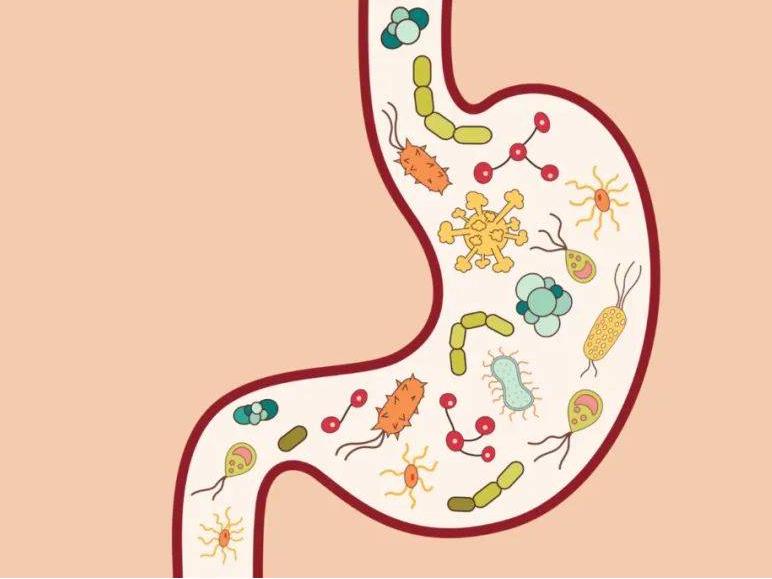
In addition to its ability to activate neutrophils and phagocytes, further activate and influence the “immune neuroendocrine” regulatory network, yeast β-glucan also has the function of promoting the intestinal immune system [24]. Wang et al. [25] found that injection of yeast β-glucan can enhance intestinal immunity by enhancing the NF-κB signaling pathway in pearl grouper. Carballo et al. [26] found that yeast β-glucan can upregulate the expression of IL-1 and interferon regulatory factor 7 expression, reduce the proportion of harmful bacteria such as Vibrio in the intestine, and improve the intestinal immunity of fish. Wang et al. [27] found that yeast β-glucan can significantly increase IFN-γ and IL-6 concentrations and promote lymphocyte proliferation; it also increases the abundance of probiotic bacteria abundance in the intestine, and promote the function of the intestinal immune system.
1.1.2 Improve immunity and inhibit excessive immune response
Children are prone to upper respiratory tract infections due to their underdeveloped immune systems. Daily supplementation with yeast β-glucan can significantly improve children's immunity and reduce the incidence and duration of colds. In clinical trials on chronic respiratory tract infections in children, short-term oral administration of yeast beta-glucan was found to significantly increase the levels of albumin, lysozyme and IgA in the saliva of sick children, regulate their mucosal immune function and significantly shorten the course of chronic respiratory diseases in children [28-29]. Meng et al. [30] found that after a period of yeast beta-glucan supplementation, the incidence and duration of the common cold in children susceptible to upper respiratory tract diseases was reduced by by 66%. In addition, clinical trials have also shown that yeast beta-glucan can improve the immune system after excessive exercise. For example, marathon runners who took 250 mg or 500 mg of yeast beta-glucan daily for four weeks after the marathon significantly reduced the symptoms of respiratory infections [31].
When the body's immune response exceeds the normal range, the body's own normal cells or tissues are attacked, which is called an allergic reaction. Clinically, the related diseases are common, such as allergic rhinitis and allergic asthma [32]. Yeast β-glucan can significantly affect the immune response of helper T cells (Th1 and Th2 cells), release anti-inflammatory cytokines such as interleukin and transforming growth factor, thereby effectively inhibiting allergic reactions [33]. Talbott et al. [34] found that a supplement of 250 mg/day of yeast beta-glucan for 4 weeks can improve allergic symptoms, as evidenced by an analysis of serum immunoglobulin E and other indicators in 48 volunteers with pollen-allergic rhinitis (24 subjects each in the yeast beta-glucan and placebo groups). Kirmaz et al. [33] investigated the effects of yeast beta-glucan on patients with allergic rhinitis. It was found that after long-term administration, the expression of IL-12 by Th1 cells in the body increased, while the expression of IL-4 and IL-5 by Th2 cells decreased significantly. At the same time, eosinophil granulocytes decreased, thereby alleviating the symptoms of allergic rhinitis.
1.2 Prebiotic function
1.2.1 Regulates intestinal flora and improves intestinal health
Yeast β-glucan can resist hydrolysis by gastric acid and digestive enzymes to a certain extent, and enhance intestinal peristalsis. At the same time, it is absorbed and metabolized by intestinal flora, and regulates the body's sugar and lipid metabolism by improving the host's intestinal flora and its metabolites, exhibiting prebiotic benefits [4, 35-36]. Yeast β-glucan can also increase the secretion of immunoglobulin A on the intestinal surface and regulate the expression of signal molecules such as hormones and cytokines to improve host intestinal health [37].
Han et al. [38] found that oral administration of yeast β-glucan significantly alleviated inflammatory infiltration and apoptosis in mice with DSS-induced colitis, and improved intestinal permeability and the integrity of tight junction structures. Li et al. [39] found that yeast β-glucan can promote the production of short-chain fatty acids, reduce the abundance of harmful bacteria such as Bacteroides, and increase the abundance of beneficial bacteria such as Lactobacillus. Sun Yunhong et al. [40] found that yeast β-glucan may regulate intestinal immune homeostasis by inhibiting the NF-κB/NLRP3 signaling pathway, restore the ratio of the Firmicutes to Bacteroidetes phyla, increase the abundance of probiotics such as Lactobacillus and Akkermansia, and restore intestinal mucosal barrier function, thereby improving the function of colitis.
Hu et al. [35] found that yeast β-glucan has prebiotic activity similar to inulin by inhibiting the abundance of harmful bacteria such as the Firmicutes and Bacteroidetes phyla and increasing the growth of beneficial bacteria such as Bifidobacterium. In addition, yeast β-glucan can also promote intestinal peristalsis, increase the rate of intestinal exchange of substances, and adsorb mycotoxins to promote intestinal health. Its main mechanisms are as follows: 1. Yeast β-glucan can inhibit the attachment of Escherichia coli to the intestinal lining by competitively inhibiting bacterial adhesins located at the tips of Escherichia coli pili; 2. Regulate the expression of neurotransmitters and tight junction proteins in intestinal epithelium to fight against pathogenic bacteria, thereby strengthening the intestinal mechanical barrier and maintain mucosal integrity; 3. Low molecular weight yeast β-glucan can penetrate microbial cell walls and disrupt cell metabolism, reducing the proportion of harmful foreign bacteria [41-43].
1.2.2 Regulate sugar and lipid metabolism and improve metabolic syndrome
Yeast β-glucan powder can regulate the intestinal microecology to prevent metabolic syndrome, effectively protect and repair pancreatic β cells, and improve insulin resistance. Cao Yan[44-45] found that yeast β-glucan can regulate the intestinal microflora of obese and type 2 diabetic mice, inhibit the process of hepatic gluconeogenesis and the expression of genes involved in fat synthesis, improve the microenvironment of adipose tissue, and effectively inhibit the chronic inflammation of the intestines and adipose tissue caused by obesity and type 2 diabetes. Mitchelson [46] and others found that yeast β-glucan can increase insulin sensitivity and liver lipid metabolism in humanized mice by improving the intestinal flora structure.
Chen [47] and others showed that yeast β-glucan can improve metabolic syndrome by reducing the levels of pro-inflammatory factors such as IL-6 in the blood of high-fat mice and reducing the relative abundance of bacteria such as Lactobacillus and Streptococcus. Other studies have also confirmed that yeast β-glucan can improve metabolic syndrome by regulating the intestinal flora, including improving weight, fat accumulation and hepatic steatosis [48]. Long-term supplementation with yeast β-glucan can restore the intestinal flora imbalance caused by a high-fat diet, and can improve weight gain, dyslipidemia and systemic inflammation in rats [49]. In addition, yeast β-glucan can reduce the absorption of glucose by inhibiting glucose transport carrier proteins in the intestine, and inhibit the expression of genes related to fat digestion and transport proteins, thereby reducing the absorption and utilization of intestinal fat [47].
Yeast β-glucan can also promote the release of lipoproteins and fatty acids, which has a good effect on reducing blood cholesterol [37, 50]. A number of clinical trials have also confirmed the beneficial effects of yeast beta-glucan on various metabolic diseases. For example, Cronin et al. [51] conducted a randomized, placebo-controlled exploratory intervention trial on patients with type 2 diabetes, which showed that after taking yeast beta-glucan for 8 weeks, patients' insulin resistance was significantly improved. Mosikanon et al. [52] conducted a 6-week population experiment on 44 obese people (2 2 people), and found that compared with the control group, yeast β-glucan can reduce the body's expression of IL-6 and TNF-α, and reduce the waist circumference and blood pressure of the subjects.
1.3 Other effects through immune regulation and prebiotic function
Yeast β-glucan can also promote wound healing, improve symptoms of chronic obstructive pulmonary disease, and cognitive impairment through immune and prebiotic activities. Yeast beta-glucan can increase the infiltration of macrophages at the wound site and at the same time strengthen the tensile strength of the wound, thereby promoting wound healing [53]. Luo Zhen [54] found that yeast beta-glucan can reduce the damage to bronchial tissue in COPD and significantly improve inflammation in the bronchial wall by improving the type and abundance of beneficial intestinal bacteria and affecting the expression of proteins in lung tissue, thereby significantly improving the symptoms associated with COPD. Zhang Qiwei [55] found that yeast β-glucan can affect the phosphatidylinositol 3-kinase (PI3K)/protein kinase B (AKT) pathway through the metabolites of intestinal flora to improve neuroinflammatory response and improve the learning and memory ability of mice.
Mo et al. [56] investigated whether long-term oral administration of yeast β-glucan could promote the production of short-chain fatty acids in the mouse intestine to inhibit neuroinflammation and thereby alleviate the symptoms associated with Alzheimer's disease. Xu et al. [57] found that yeast β-glucan could alter the composition of the intestinal flora and improve cognitive dysfunction caused by Alzheimer's disease through the gut-brain axis pathway.
2 Application of yeast β-glucan in the food industry
Yeast β-glucan is increasingly being used in the food industry, not only as a food additive and food ingredient to improve the texture and stability of products, but also to enhance their health benefits (Figure 2). Due to its thickening and emulsifying properties, yeast β-glucan can be used as a thickener when added to yogurt in the right proportions [58]. Raikos et al. [59] added β-glucan to fat-free yogurt at different concentrations. When the β-glucan content was as high as 0.8%, the physical and structural properties of the yogurt were better, and the fermentation time was significantly shortened by 1 h. Sahlany et al. [60] added 0.1%/0.5%/1% yeast β-glucan to acid milk, respectively, with 0.1%/0.5%/1% yeast β-glucan, and found that compared with yogurt without added β-glucan, the acidity of the bio-yogurt with 0.5% and 1% β-glucan added increased, and the water loss and shrinkage decreased. Yeast β-glucan also has potential applications in bread, pasta and biscuit products. For example, adding yeast β-glucan during the bread-making process can maintain the sensory properties of the bread. Martins et al. [61] added about 2% yeast β-glucan to bread, which formed a uniform pore structure after baking, improving the texture and nutritional properties.
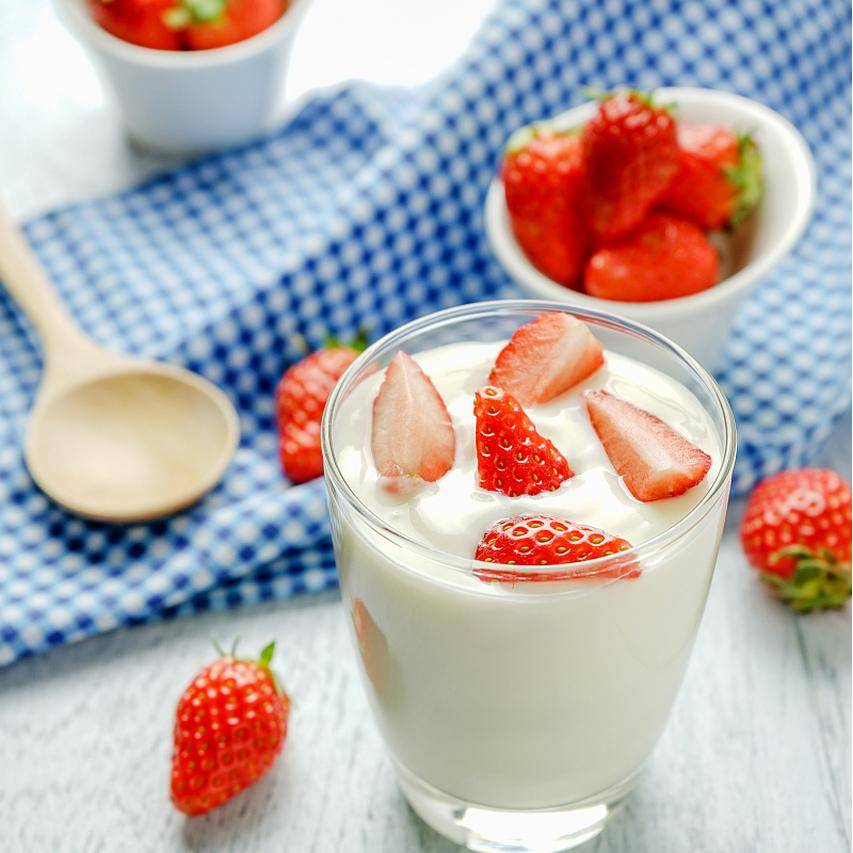
Yeast β-glucan can be used alone or in combination with other macromolecules such as proteins as a raw material for biocoatings due to its good rheological properties and biocompatibility [62]. Miroslav et al. [63] used 20% yeast β-glucan and glycerin to produce a dense, non-porous film that is insoluble in water. After aging for one year, the properties remained almost unchanged, making it a good food packaging material.
The water retention and emulsifying properties of yeast β-glucan and its complexes are beneficial for meat products, promoting water absorption, enhancing the product's texture, and imparting different flavors and textures. Apostu et al. [64] found that 1.5% yeast β-glucan in meat products can achieve optimal water retention and reduce the amount of sodium chloride in the product. Zhang Manli [65] found that adding β-glucan or a complex to meat products can reduce the proportion of fat and the amount of starch added. Replacing 20% of the fat in sausages with a yeast β-glucan and peanut protein isolate complex produced a product with comparable water retention and texture to the commercial product. The emulsifying properties of yeast β-glucan also allow it to partially replace fat as a fat replacer. Reis et al. [66] studied the use of yeast β-glucan to replace fat in mayonnaise production, which resulted in a longer shelf life and lower calories than regular mayonnaise.
With increasing health concerns, especially the demand for immunity enhancement and disease prevention, yeast β-glucan has broad application potential in the domestic and international markets as an ingredient with multiple health benefits. Currently, yeast β-glucan-related products cover dairy products, functional foods, health products, etc., and product formulations involve beverages, powders, capsules, candies, etc.[67-68]. For example, Mead Johnson's “Blue Zen” series of milk powder adds yeast β-glucan to improve immunity, Red Bull's “EXTRA” product, Amway's apple juice concentrate, and Goodhealth's Good Health Chewable Chewable Tablets.

3 Conclusion and outlook
China has a long history of fermented foods and is rich in yeast resources, so the effective use of yeast β-glucan has great application value. Yeast β-glucan has significant functional activities such as immunomodulation and prebiotic effects, and is currently used in food additives, nutritional supplements, and drug carriers. However, there are still some problems with the current development and utilization of yeast β-glucan: 1) Although there have been many animal and human trials on yeast β-glucan, most of them focus on regulating immunity and glycolipid metabolism, and other functional activities still need to be explored in depth. 2) Despite the structural similarity of yeast β-glucan, its molecular weight, branching ratio and other structures give it different physicochemical properties, so the relevant structure-activity relationships still need to be revealed. 3) Yeast β- glucan has extensive application value in the food field, and further research is needed on its processing and product adaptability in order to expand its scope of application.
Reference:
[1] PILLEMER L, ECKER E E. Anti-complementary factor in fresh yeast[J]. Journal of Biological Chemistry, 1941, 137(1): 139-142.
[2] LUZIO N R D, RIGGI S J. The effects of laminarin, sulfated glucan and oligosaccharides of glucan on reticuloendothelial activity[J]. Journal of the Reticuloendothelial Society, 1970, 8(5): 465-473.
[3] DONG W, LI Y, XUE S, et al. Yeast polysaccharides: The environmentally friendly polysaccharides with broad application potentials[J]. Comprehensive Reviews in Food Science and Food Safety, 2024, 23(5).
[4] WANG Jiajia, HU Songqing, HUANG Yanbo, et al. Physicochemical Properties and Prebiotics Effect of Yeast β-glucans in vitro[J]. Journal of Chinese Institute of Food Science and Technology , 2018, 18(07): 10-17.
[5]XU Congling, ZHONG Shihuan, ZHANG Siqi et al.Determination of Yeast β-glucan in Dairy Products[J]. China Dairy, 2023(07): 94-98.
[6] CHEN Cheng, WANG Hongtao, CHEN Baohong, et al.Optimization of Production Process of β-glucans from Kluyveromyces Marxianus[J].The Food Industry, 2015, 36(01): 133-136.
[7] VAITHANOMSAT P, BOONLUM N, TRAKUNJAE C, et al. Functionality of Yeast β-Glucan Recovered from Kluyveromyces marxianus by Alkaline and Enzymatic Processes[J]. Polymers, 2022, 14(8): 1582.
[8] CHEN Cheng.Biological Activity of β-glucans from Kluyveromyces marxianus[J]. The Food Industry, 2016, 37(07): 68-71.
[9] LIU Y, WU Q, WU X, et al. Structure, preparation, modification, and bioactivities of β-glucan and mannan from yeast cell wall: A review[J]. International Journal of Biological Macromolecules, 2021, 173.
[10] GUO Yong, WANG Zhenwei. Bioactive Function of Yeast β-Glucan and Its Application[J]. Food and Nutrition in China, 2010(09): 24-26.
[11] HORNECK JOHNSTON C J H, LEDWITH A E, LUNDAHL M L E, et al. Recognition of yeast beta-glucan particles triggers immunometabolic signaling required for trained immunity[J]. Iscience, 2024, 27(3): 109030.
[12] VOLMAN J J, RAMAKERS J D, PLAT J. Dietary modulation of immune function by beta-glucans.[J]. Physiology & Behavior, 2008, 94(2): 276-284.
[13] GANDA MALL J P, CASADO-BEDMAR M, WINBERG M E, et al. A β-Glucan-Based Dietary Fiber Reduces Mast Cell-Induced Hyperpermeability in Ileum From Patients With Crohn's Disease and Control Subjects[J]. Inflammatory Bowel Diseases, 2017, 24(1): 166.
[14] GOODRIDGE H S, REYES C N, BECKER C A, et al. Activation of the innate immune receptor Dectin-1 upon formation of a 'phagocytic synapse'[J]. Nature, 2024.
[15] NANDITA B, WURST L R, CHAN A S H, et al. Differential regulation of oxidative burst by distinct β-glucan-binding receptors and signaling pathways in human peripheral blood mononuclear cells.[J]. Glycobiology, 2014(4): 379-391.
[16] LEONIE S, HILKENS C M, MORRISON V L. β2 Integrins As Regulators of Dendritic Cell, Monocyte, and Macrophage Function[J]. Frontiers in Immunology, 2017, 8: 1866.
[17] LIU X, SHI Y, LIU R, et al. Structure of human phagocyte NADPH oxidase in the activated state[J]. Nature, 2024(Mar.7 TN.8002): 627.
[18] BAI Yu, QI Jianchun, XIA Lei, et al.Yeast β-glucan vehicle based OVA vaccine induces humoral and antigen-specific T cell immune responses[J]. Chinese Journal of Immunology , 2023: 1-15.
[19] ZHAO Wenting, CHEN Zhixian, ZHANG Xiaoli, te al. Regulating Effect of Yeast β-Glucan on Immunity[J]. Food Science and Technology, 2021, 46(12): 245-250.
[20] LEE C, VERMA R, BYUN S, et al. Structural specificities of cell surface β-glucan polysaccharides determine commensal yeast mediated immuno-modulatory activities[J]. Nature Communications, 2021, 12(1).
[21] ZHU Yamin, ZHANG Haibo, XIA Changhong, et al. Study on the Effect of Yeast β-dextran on Immunity in Mice[J]. Food and Fermentation Science & Technology, 2016, 52(02): 1-2.
[22] CASTRO E D M, CALDER P C, ROCHE H M. β-1,3/1,6-Glucans and Immunity: State of the Art and Future Directions[J]. Molecular Nutrition & Food Research, 2021, 65(1): e1901071.
[23] VUSCAN P, KISCHKEL B, HATZIOANNOU A, et al. Potent induction of trained immunity by Saccharomyces cerevisiae β-glucans[J]. Frontiers in Immunology, 2024, 15.
[24] FEIFEI, HAN, HANXUE, et al. Oral administration of yeast β-glucan ameliorates inflammation and intestinal barrier in dextran sodium sulfate-induced acute colitis[J]. Journal of Functional Foods, 2017.
[25] WANG F, XU J, HU C, et al. β-glucan regulates the intestinal immunity of pearl gentian grouper via the nuclear factor kappa B signaling pathway[J]. Fish & Shellfish Immunology, 2024, 154: 109941.
[26] CARBALLO C, PINTO P I S, MATEUS A P, et al. Yeast β-glucans and microalgal extracts modulate the immune response and gut microbiome in Senegalese sole (Solea senegalensis)[J]. Fish & Shellfish Immunology, 2019, 92: 31-39.
[27] WANG M, WANG X, ZHANG L, et al. Effect of sulfated yeast beta-glucan on cyclophosphamide-induced immunosuppression in chickens[J]. International Immunopharmacology, 2019, 74: 105690.
[28] VETVICKA V, RICHTER J, SVOZIL V, et al. Placebo-driven clinical trials of yeast-derived β-(1-3) glucan in children with chronic respiratory problems[J]. Annals of Translational Medicine, 2013, 1(3): 26.
[29] RICHTER J, SVOZIL V, KRÁL V, et al. β-glucan affects mucosal immunity in children with chronic respiratory problems under physical stress: clinical trials[J]. Annals of Translational Medicine, 2015, 3(4): 52.
[30] MENG F. Bakers Yeast Beta-Glucan Decreases Episodes of Common Childhood Illness in 1 to 4 Year Old Children during Cold Season in China[J]. Journal of Nutrition & Food Sciences, 2016, 6(4).
[31] TALBOTT S, TALBOTT J. Effect of BETA 1, 3/1, 6 GLUCAN on Upper Respiratory Tract Infection Symptoms and Mood State in Marathon Athletes.[J]. Journal of Sports Science & Medicine, 2009, 8(4): 509-515.
[32] RENZ H, ALLEN K J, SICHERER S H, et al. Food allergy[J]. Nature Reviews Disease Primers, 2018, 4: 17098.
[33] JESENAK M, BANOVCIN P, RENNEROVA Z, et al. β-Glucans in the treatment and prevention of allergic diseases[J]. Allergol Immunopathol, 2014, 42(2): 149-156.
[34] TALBOTT S M, TALBOTT J A, TALBOTT T L, et al. β-Glucan supplementation, allergy symptoms, and quality of life in self-described ragweed allergy sufferers[J]. Food Science & Nutrition, 2013, 1(1).
[35] WANG H, CHEN G, LI X, et al. Yeast β-glucan, a potential prebiotic, showed a similar probiotic activity to inulin[J]. Food & Function, 2020.
[36] ZHANG S, NIE Q, SUN Y, et al. Bacteroides uniformis degrades β-glucan to promote Lactobacillus johnsonii improving indole-3-lactic acid levels in alleviating colitis[J]. Microbiome, 2024, 12(1).
[37] LIU Yan, LI Xiangyu, LI Chenghui. The research of Yeast-β-glucan nutrition[J]. Livestock and Poultry Industry, 2019, 30(02): 4-6.
[38] HAN F, FAN H, YAO M, et al. Oral administration of yeast β-glucan ameliorates inflammation and intestinal barrier in dextran sodium sulfate-induced acute colitis[J]. Journal of Functional Foods, 2017, 35: 115-126.
[39] LI S, PENG H, SUN Y, et al. Yeast β-glucan attenuates dextran sulfate sodium-induced colitis: Involvement of gut microbiota and short-chain fatty acids[J]. International Journal of Biological Macromolecules, 2024, 280.
[40] Sun Yunhong, Mo Xiaoxing, Shen Lihui, et al. Research on the ameliorative effect and related mechanism of yeast β-glucan on colitis induced by high-fat diet: 14th Asian Congress of Nutrition [Z]. Chengdu, Sichuan, China: 20231.
[41] CHEN Z S Y L. Effects of Bread Yeast Cell Wall Beta-Glucans on Mice with Loperamide-Induced Constipation[J]. Journal of Medicinal Food, 2019, 22(10).
[42] SIVIGNON A, YU S Y, BALLET N, et al. Heteropolysaccharides from S. cerevisiae show
anti-adhesive properties against E. coli associated with Crohn's disease[J]. Carbohydrate Polymers, 2021(6200): 118415.
[43] KHAN A A, GANI A, MASOODI F A, et al. Structural, thermal, functional, antioxidant & antimicrobial properties of β-d-glucan extracted from baker's yeast (Saccharomyces cereviseae)-Effect of γ-irradiation.[J]. Carbohydrate Polymers, 2016: 442-450.
[44] CAO Yan. Structure of yeast B-glucan and its metabolic regulation in obese/type 2 diabetic mice[D]. Wuhan:Wuhan University, 2017.
[45] CAO Y, SUN Y, ZOU S, et al. Yeast β-Glucan Suppresses the Chronic Inflammation and Improves the Microenvironment in Adipose Tissues of ob/ob Mice[J]. Journal of Agricultural and Food Chemistry, 2017, 66(3): 621-629.
[46] MITCHELSON K A J, TRAN T T T, DILLON E T, et al. Yeast β-Glucan Improves Insulin Sensitivity and Hepatic Lipid Metabolism in Mice Humanized with Obese Type 2 Diabetic Gut Microbiota[J]. Molecular Nutrition & Food Research, 2022, 66(22).
[47] CHEN G, CHEN D, ZHOU W, et al. Improvement of Metabolic Syndrome in High-Fat Diet-Induced Mice by Yeast β-Glucan Is Linked to Inhibited Proliferation ofLactobacillus andLactococcusin Gut Microbiota[J]. Journal of Agricultural and Food Chemistry, 2021, 69(27): 7581-7592.
[48] LI X, WU J, KANG Y, et al. Yeast mannoproteins are expected to be a novel potential functional food for attenuation of obesity and modulation of gut microbiota[J]. Frontiers in Nutrition, 2022, 9.
[49] MO X, SUN Y, LIANG X, et al. Insoluble yeast β-glucan attenuates high-fat diet-induced obesity by regulating gut microbiota and its metabolites[J]. Carbohydrate Polymers, 2022, 281: 119046.
[50] CAO Y, ZOU S, XU H, et al. Front cover: Hypoglycemic activity of the Baker's yeast β-glucan in obese/type 2 diabetic mice and the underlying mechanism[J]. Molecular Nutrition & Food Research, 2016.
[51] CRONIN P, HURLEY C, RYAN A, et al. Yeast β-glucan supplementation lowers insulin resistance without altering microbiota composition compared to placebo in subjects with Type II diabetes: a phase I exploratory study[J]. British Journal of Nutrition, 2024: 1-35.
[52] MOSIKANON K, ARTHAN D, KETTAWAN A, et al. Yeast β-Glucan Modulates Inflammation and Waist Circumference in Overweight and Obese Subjects[J]. Journal of Dietary Supplements, 2016: 1-13.
[53] Yang Ming Chien. Evaluation of glucan / poly ( vinyl alcohol ) blend wound dressing using rat models [ J ] . I nternational journal of pharmaceutics, 2008 , 346 ( 1 - 2 ) : 38 - 46
[54] LUO Zhen. Investigation on the mechanism of yeast β - glucan on COPD by multi-Omics analysis[D]. Guangzhou: South China University of Technology, 2021.
[55] ZHANG Qiwei. Yeast β-glucan Attenuates Cognitive Impairment in APP/PS1Mice through Regulation of Intestinal Flora and the Related Mechanism[D]. Taian: Shandong Agricultural University, 2023.
[56] MO X, CHENG R, SHEN L, et al. Yeast β-glucan alleviates high-fat diet-induced Alzheimer's disease-like pathologies in rats via the gut-brain axis[J]. International Journal of Biological Macromolecules, 2024, 278.
[57] B M X A, B X M A, B H H A, et al. Yeast β-glucan alleviates cognitive deficit by regulating gut microbiota and metabolites in Aβ 1 – 42 -induced AD-like mice[J]. International Journal of Biological Macromolecules, 2020, 161: 258-270.
[58] MYKHALEVYCH A, POLISHCHUK G, NASSAR K, et al. β-Glucan as a Techno-Functional Ingredient in Dairy and Milk-Based Products—A Review[J]. Molecules, 2022, 27.
[59] RAIKOS V, GRANT S B, HAYES H, et al. Use of β-glucan from spent brewer's yeast as a thickener in skimmed yogurt: Physicochemical, textural, and structural properties related to sensory perception[J]. Journal of Dairy Science, 2018, 101(7): 5821-5831.
[60] AL-SAHLANY S T G, AL-KAABI W J, ALMANHEL A J A, et al. Effects of β-glucan extracted from Saccharomyces cerevisiae on the quality of bio-yoghurts: in vitro and in vivo evaluation[J]. Journal of Food Measurement and Characterization, 2022, 16(5): 3607-3617.
[61] MARTINS Z E P O. Impact of new ingredients obtained from brewer's spent yeast on bread characteristics[J]. Journal of Food Science and Technology, 2018, 55(5).
[62] PELTZER M J F S. beta-Glucan, a Promising Polysaccharide for Bio-based Films Developments for Food Contact Materials and Medical Applications[J]. Current Organic Chemistry, 2018, 22(12).
[63] NOVÁK M, SYNYTSYA A, GEDEON O, et al. Yeast β(1-3),(1-6)-d-glucan films: Preparation and characterization of some structural and physical properties[J]. Carbohydrate Polymers, 2012, 87(4): 2496-2504.
[64] APOSTU P M, MIHOCIU T E, NICOLAU AI. Technological and sensorial role of yeast β-glucan in meat batter reformulations[J]. Journal of Food Science and Technology, 2017, 54(9): 2653-2660.
[65] ZHANG Manli. Study on the Improvement and Application of YeastB-glucan Solubility and Emulsification[D]. Beijing: Chinese Academy of Agricultural Sciences, 2021.
[66] REIS S F, FERNANDES P A R, MARTINS V J, et al. Brewer’s Spent Yeast Cell Wall Polysaccharides as Vegan and Clean Label Additives for Mayonnaise Formulation[J]. Molecules, 2023, 28(8): 3540.
[67] ZOU Yan, YUAN Peng, ZHOU Fang, et al.Advance on solubilization modification technology and its application of yeast β-glucan[J]. Food and Fermentation Industries, 2024: 1-11.
[68] WANG H, CHEN G, LI X, et al. Yeast beta-glucan, a potential prebiotic, showed a similar probiotic activity to inulin[J]. Food Funct, 2020, 11(12): 10386-10396.


 English
English French
French Spanish
Spanish Russian
Russian Korean
Korean Japanese
Japanese